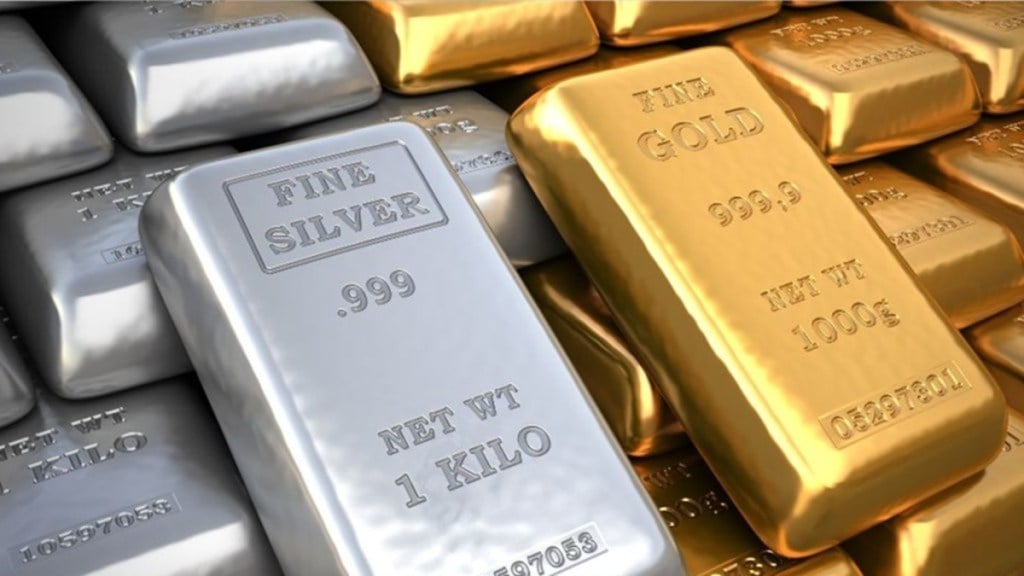From last Diwali to this Diwali, both gold and silver have made unprecedented gains. But this time, silver has outshone gold. While gold ETFs have delivered impressive returns of nearly 65% over the past year, silver ETFs have surprised everyone by jumping nearly 80%.
Gold and silver’s returns from Diwali to Diwali
Both gold and silver prices have skyrocketed over the past year. MCX gold prices have reached an all-time high of Rs 1,28,395 per 10 grams this week. MCX silver prices reached Rs 1,64,660 per kg — the highest level ever.
In terms of returns, physical gold has delivered approximately 66% in the last one year, while silver has seen a whopping 87% growth in value. This performance far surpasses equities, bonds, or any other asset class.
Why did gold and silver prices surge?
Over the past year, global economic uncertainty, geopolitical tensions, and heavy central bank purchases have fueled demand for both gold and silver.
But there are other significant reasons:
Safe-haven demand: Whenever market volatility increases, investors flock to safe havens like gold and silver.
Falling interest rates and weak rupee: Falling interest rates and a weak rupee have further supported precious metal prices.
Central bank purchases: Central banks around the world have increased their gold reserves—adding additional strength to prices.
Festival and wedding season: Gold consumption in India peaks during the festive and wedding season, driving prices higher.
Why has silver become investors’ new favourite?
This time, the real hero of the story isn’t gold, but silver. Silver’s lustre is rapidly increasing not only in the investment world but also in the industrial sector.
Industrial demand: Now, nearly 60% of total silver consumption comes from industrial uses—such as solar panels, electric vehicles, and electronic equipment.
Supply deficit: For seven consecutive years, there has been a global supply shortage of silver.
This explains why this increase is driven by fundamental (structural) demand, not just speculation.
Investment boom in silver ETFs and new problems
The rapid rise in silver prices over the past few months has attracted investors. Many invested in silver ETFs and fund of funds and reaped impressive profits in just a few weeks. But amid the sharp rise, a shortage of physical silver has created a new dilemma.
Silver orders have been temporarily halted in Mumbai’s Zaveri Bazaar. Perth Mint has also halted silver supplies.
Many mutual fund houses in India — such as Kotak, SBI, UTI, Tata and ICICI Prudential — have temporarily suspended lump-sum investments in silver ETF FoFs.
This shortage has led to a premium on silver prices in the physical market, while ETF prices remain relatively stable. This has further increased FOMO (Fear of Missing Out) among investors.
Lessons for investors — What to do in Diwali 2025?
After such impressive returns, the big question is — should one still invest in gold and silver?
Experts say: Investing in gold remains a safe bet for the long term. Silver is on the rise, but it has high volatility, i.e., sharp fluctuations; therefore, new investors should gradually increase their exposure through SIPs or ETFs, avoiding lump-sum investments. And most importantly, keep only 10-15% of your portfolio in gold and silver, say experts.
Summing up…
Both gold and silver have given investors excellent profits in the past year. But this time, silver has dimmed the shine of gold. If you had invested Rs 1 lakh in a silver ETF last Diwali, you would have had around Rs 1.8 lakh today. The same investment in gold would have reached Rs 1.65 lakh.
So, this Diwali, the question remains: Which will shine in your portfolio — gold or silver?
Disclaimer: The above content is for informational purposes only. Mutual Fund investments are subject to market risks. Please consult your financial advisor before investing.


